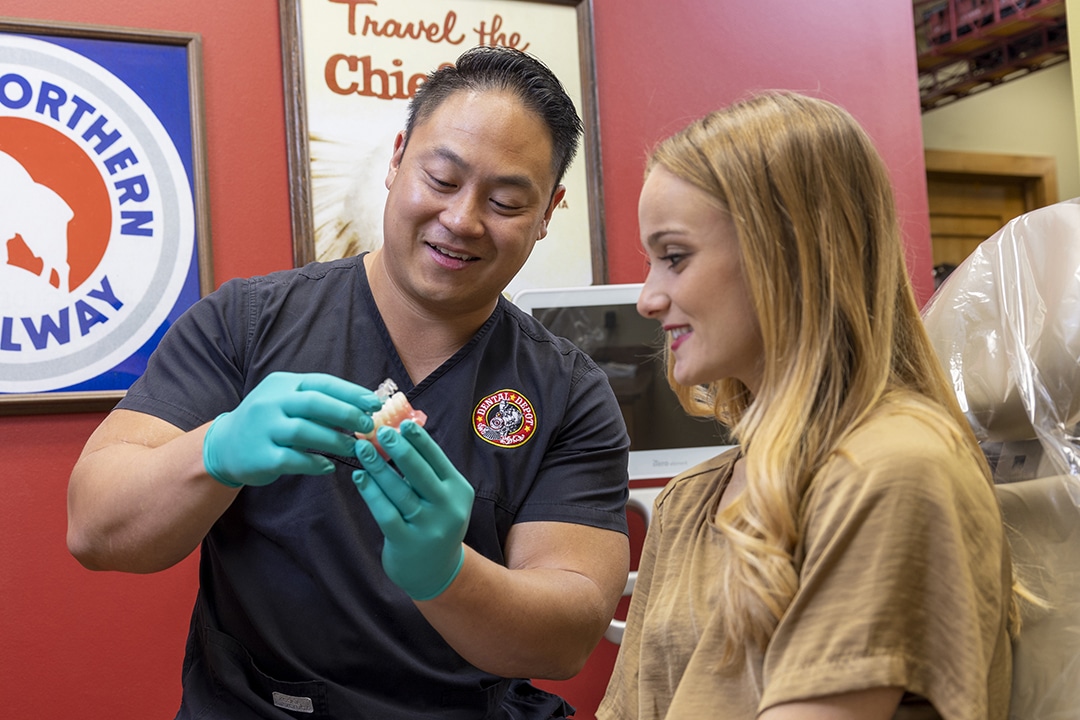Impacted canines can damage surrounding structures including adjacent teeth. If left untreated, impacted canines can lead to the development of cysts around the un-erupted crown; this can severely damage roots of adjacent teeth.
Successful treatment of impacted canines depends on early detection. The older the patient is, the more likely the canines will fuse in place and resist all attempts to get them to emerge. In such cases, the only option is to extract the canine and replace it with a dental implant.

If impacted canines are detected early enough, an orthodontist can expose the canine and force it to fit into the dental arch.
The position of the impacted tooth in relation to the rest of the teeth in the dental arch is an important consideration in deciding the course of treatment. Dentists also take into account the reasons behind the canine not erupting naturally. These can include:
Dentists may recommend braces to open up the eruption path for the canines. This procedure works till the age of 11 or 12 years. As often as possible, dentists prefer to orthodontically extrude the impacted tooth. One important reason for this is that the maxillary canine teeth offer support to the insides of the cheek and the nasal rim.
Extracting the tooth can cause the upper lip to appear flattened. Removing an impacted canine from only one side of the maxillary dental midline can cause the face to appear asymmetrical.
